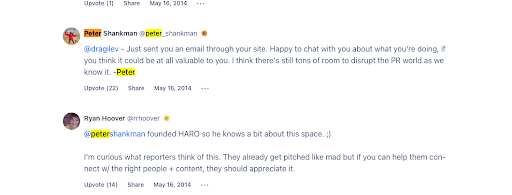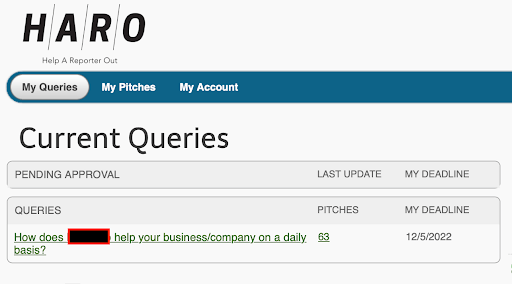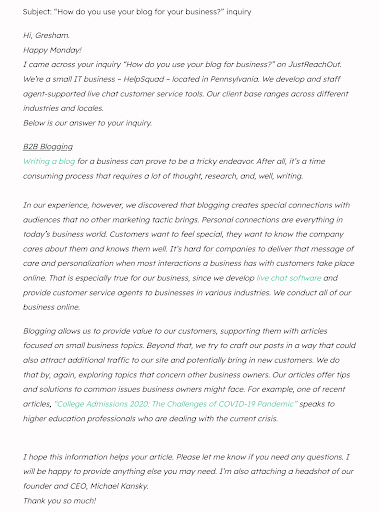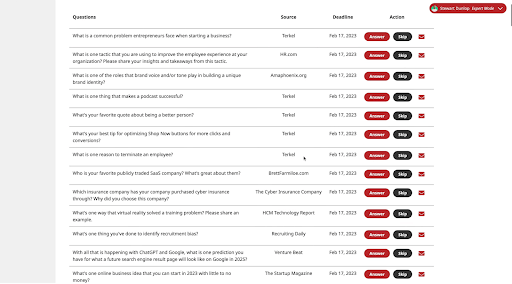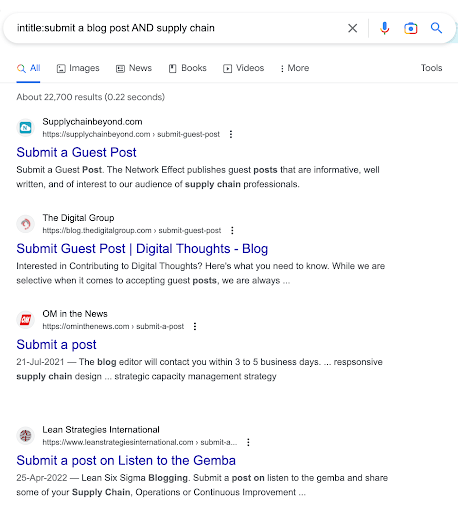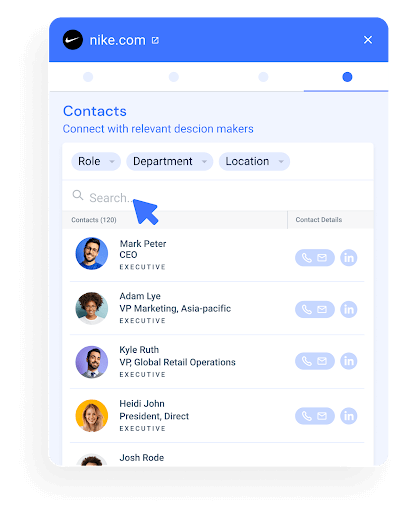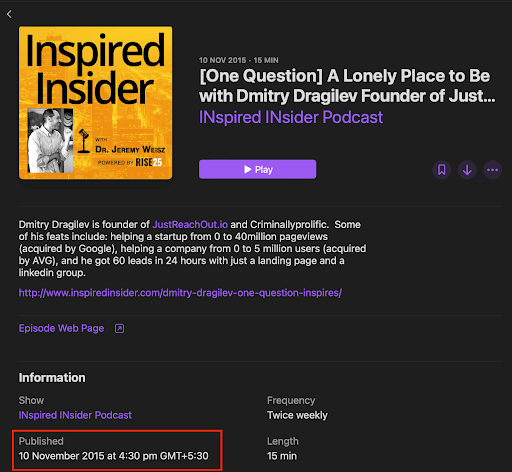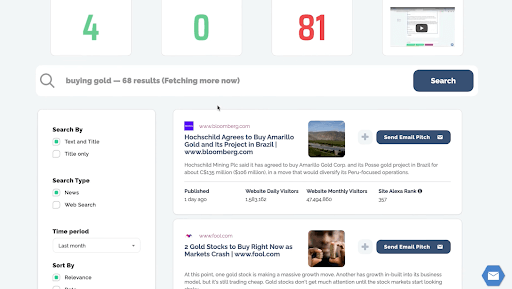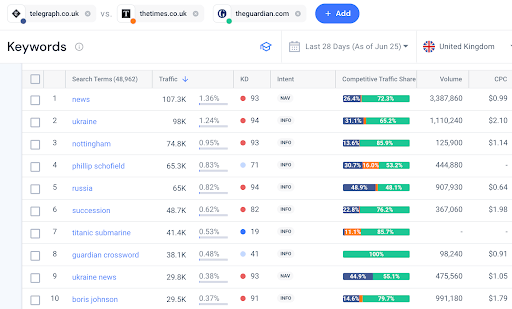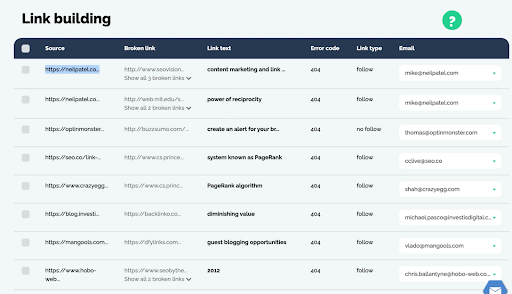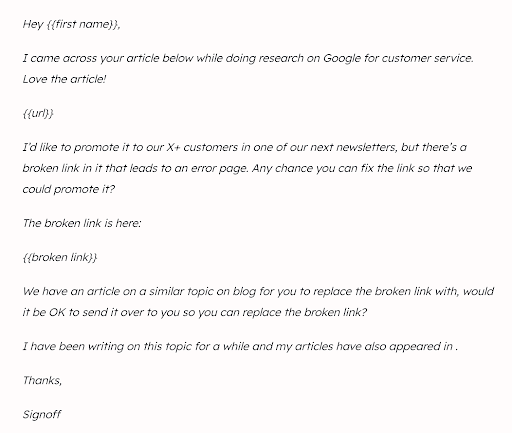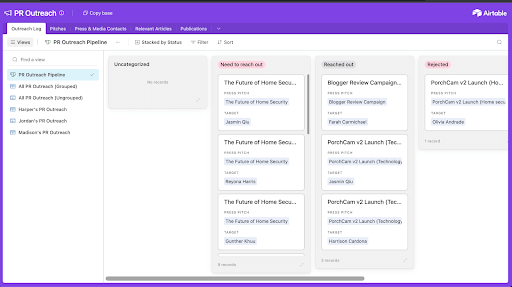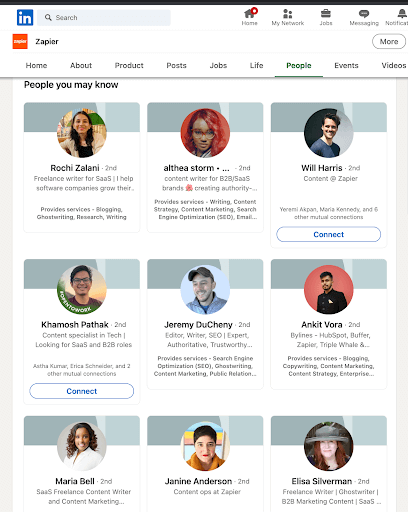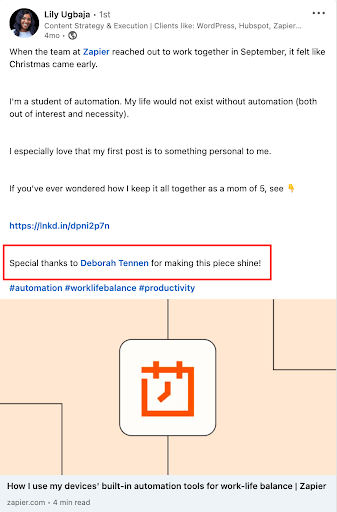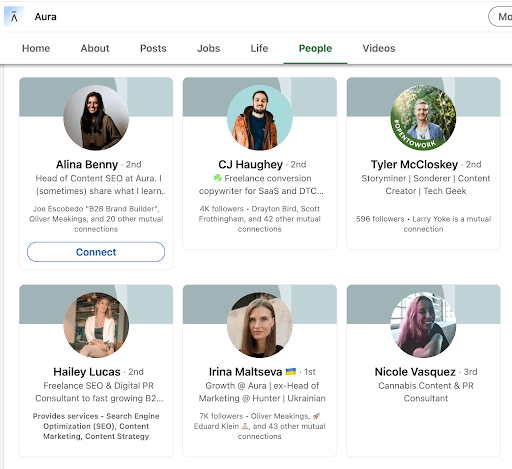PR Can Boost Your SEO: Here’s How To Do It Right

When you’re running a small business or a startup, PR is one thing that can put you in front of the right people.
But digital PR in particular does more than just create a brand image – it helps your SEO performance as well. With PR outreach, you get:
- Coverage from reputed media sites
- A traffic boost for your website
- Visibility in Google News, Twitter, LinkedIn, and other platforms
- Improved domain authority for Google
If you can use PR to get an article published about your brand, that article will most likely have a backlink to your website or at least an unlinked brand mention.
These kind of PR brand mentions is how, in May 2023, TopicRanker.com got 532 new customers to sign up in just two weeks, following the publication of our case study titled: New Domain Ranked #1 On Google In 2 Weeks: Here is My Process For Finding Easy To Rank Keywords. We published it on IndieHackers and it received 15K+ views and 95+ comments.
Working with PR outreach, we acquired enough links to scale our startup from 0 to 40 million pageviews per month in 2 years before it was sold to Google.
But here’s a valuable bit of information: PR is not a magic wand for new brands.
It’s difficult to convince journalists to cover your story or allow you to contribute content for their blogs. And it’s very easy to waste thousands of dollars without seeing any results.
Learning a lot from my own experience with running three businesses in the last ten years, I’ve had three notable successes in PR outreach:
- At JustReachOut.io, we’ve helped 5000+ small businesses do PR outreach all on their own with our software platform.
- At PRThatConverts.com, I personally coached 700+ brands to do their own PR outreach.
- At CriminallyProlific, we helped folks like MarketWatch, HelpScout, Nextiva, Aura, and Realtor do SEO and PR to produce real results.
Additionally, digital PR is an essential part of off-page SEO, as it helps build high-quality backlinks, increases domain authority, and boosts organic visibility.
So taking my experience into account, here are four PR methods (with the possibility of great results and beating the big guys in SERPs) for you to try:
How to use PR outreach to build links for SEO gains
1) PR outreach
If you’re just getting started, you’re unlikely to have a list of publications or writers that you can turn to. Or maybe, you’re looking for a different niche than you have previously. Here are three platforms that can help you find publishing opportunities to increase traffic to your website (and boost your SEO as a result):
HARO
Help a Reporter Out (HARO) is an outreach platform that connects sources with journalists and publications. Writers get raw insights from experts, and in most cases, the experts (brands) get backlinks. In other words, it’s a win-win for both sides.
I was actually lucky enough to meet the founder of Haro, Peter Shankman, shortly after I launched JustReachOut on ProductHunt.
HARO has grown in popularity over the years, meaning more people are now looking to share their opinions in the hope of getting links.
Anyone who writes content for a publication can technically say they are a writer/journalist and ask questions from experts/brands. You do however need to list your publication name and URL and pass through their audit to make sure you’re a legitimate website and person.
Since I run a blog called SmallBiz.tools, I recently signed up as a writer/journalist and asked for expert opinions from brands about a SaaS tool in HARO.
I got 63 replies in two days:
On the flip side, you have to dig through a lot of fluff to find the golden nuggets of information. From my experience, it took me almost 45 minutes to read through all of the 63 responses to find one that might be a good one to use.
If you want to be a brand that stands out, here are some suggestions:
- Be quick in responding to queries
- Personalize your responses with interesting insights
- Research the journalist/publication to understand what type of content they write so that your replies fit naturally into the piece
Here’s a template you can use and edit accordingly. It’s short, it shares a new perspective (lending industry), and it leaves a great CTA to discuss more.
Not too long ago, a JustReachOut customer, Nancy Bucay was able to get four backlinks from BeaconStac, Referral Rock, CEO Blog Nation, and Beekeeper in one month, using this template.
Here’s some insight into how she adopted and changed the template, starting with small detail about her company then getting straight into the answer:
But HARO is not the only player in the market – you can also try Qwoted and Terkel to find publishing opportunities.
Qwoted
On the surface, Qwoted works just like HARO but unlike HARO, the sign-up process for Qwoted is manual and approval-based. The good thing is once you’re in, you have fewer competitors to fend off and more journalists to pitch to.
The free plan allows you to answer only three queries a month which can be seen as restrictive, but if you have the experience, expertise, and demographics the journalists generally look for, Qwoted will serve you well.
Terkel
Then there’s Terkel, another less saturated – and maybe less overwhelming – PR outreach platform. Terkel takes a hands-on approach where they partner with blogs such as GoDaddy, Calendly, and SCORE to feature expert quotes. If you’re targeting one of Terkel’s network blogs, you should try answering their queries.
2) Guest post outreach
Other than getting backlinks for your quotes, you can try writing the whole article yourself and submitting it to a publication.
➕ Plus point: a guest post means you can control exactly how the links and mentions show up in the article.
With guest posts, you share your knowledge on someone else’s blog. It’s not owned media, but it puts you in the spotlight. You get access to new readers (and potential leads), and Google takes notice.
But the thing is, it’s not a new phenomenon in the SEO world. Most businesses struggle to place a dollar value on guest posting outreach campaigns because the competition is too high and the outreach process is broken.
How do you avoid the same trap? Make sure the guest post is a subtopic of your backlink page.
Our customer, Nextiva wanted to rank better for the business VoIP guide on their website so they secured backlinks from guest posts that discussed more specific topics. That way, the backlink became organic and it helped people to read more about similar ideas. If you don’t want to come across as spammy, find your mother article and link it to specific subtopics.
Want to find guest-posting opportunities in high DR websites? Here are the three steps you need to follow to achieve the same:
1. Prospecting
Reasons why guest posting often doesn’t work are because of the lack of “fit”, poor content quality, and crazy volumes of cold emails. Don’t just go for any website that accepts guest posts, find ones that will cover your subtopic specifically.
Our customer, Aura wanted to boost backlinks for an article discussing ways to remove personal information from the internet. So, the guest post topic was narrowed down to “How to hire cybersecurity talent” which also explained ways to remove information from the web because recruiters often look for this. Naturally, they went with a publication that focuses on HR and recruitment.
My two cents? I usually find publications and writers I admire in the industry and use the Content Partner tool to reach the right editor. It saves time and makes outreach super easy. But if you want a slightly more long-winded route, try Google’s search operators.
Here are a few you can try:
- [keyword] (inurl:”contributor-guidelines”)
- [keyword] (“submit a blog post”)
- intext:[keyword]
Here’s one example with “supply chain” which saw some good results:
PSA: A lot of websites that openly advertise guest posting opportunities want you to pay for links – steer clear.
2. Identify key figures
Some websites have transparent guest posting forms, but the popular ones require you to make an extra effort. You need to find the Head of Content, content managers, SEO managers, and editors to move forward.
Before pitching, connect with them on LinkedIn, start interacting with their posts, learn about their content strategy and preferences, and ONLY pitch when you’ve built a rapport.
The Content Partner tool mentioned previously can help here, but Similarweb Sales Intelligence and its Contacts feature is another useful tool to find key decision-makers, quickly.
Use the platform to find up-to-date contact information by researching their independent website or the company (or companies) they work for – and hey, you never know, you might find someone even more relevant to reach out to.
The best bit? You can download your prospect list straight to your CRM (HubSpot or Salesforce), or just to an Excel spreadsheet if that’s your preference. Find relevant contacts in our database of over 100K companies, with job titles available so you can make sure you’re reaching out to the right person.
Template for guest posting outreach
Here’s a high-converting template that we’ve used for guest posting outreach – and now you can use it too:
Subject: Guest Post Submission
Hi there,
I’d like to submit my article titled <insert title> for Ad Tasher. You regularly feature guest contributions from experts on <insert topic> and I decided to write an article for you. Here is a brief summary/outline:
<Title>
* insert bullet 1 with some info about the intro for the topic
* insert bullet 2 with some info about the main argument/info you’re conveying in the article
* insert bullet 3 with some info about the main argument/info you’re conveying in the article
I have been writing on this topic for a while and my articles have also appeared in <insert other publications and blogs where you’ve written>.
I also write extensively about this on our company blog <insert ’company name’ blog (link)>. <Insert any other related info to establish yourself as an expert>
You can find my draft linked here: <insert a link to your article on the cloud>
Do you see a place for it on <blog name>?
Sign off
3) Podcast outreach
Now, this is one channel that’s fairly new to the PR game: it’s podcast outreach.
The last eight years have reinforced our beliefs in podcast’s SEO power and here are some highlights on why you should try podcasts, even if guest posting and HARO pitches are already working wonders for you:
- Tap into a new demographic: Podcast audiences don’t always overlap with committed blog readers.
- Promote your brand through a different medium: Cast a wider net to spread brand awareness.
- Improve your backlink health: Podcast episodes often give a link back to your website, (predominantly your homepage).
How to find podcast leads
Now, the big question: how do you find podcasts for PR outreach?
You can start by repeating the prospecting stage mentioned in the previous section, only this time, extend that search to Apple Podcasts and Spotify as well.
Once you have a list of relevant podcasts, you need to create a list, here is a good example below:
Then, you reach out with an email – but just like most outreach channels, you might not get a response unless you give them a reason to invite you.
The key here is to personalize that outreach message as much as possible. You can do that in a number of ways, like:
- Listen to an episode or two to understand what the hosts talk about
- Discover topics they’ve missed or that you can add new perspectives to
- Provide them with valuable data eg. how they compare to their competitor with competitor analysis, the keywords with low search volume they are putting too much emphasis on, or the keywords they are missing out on with Keyword Gap
One great example for you: The folks at Testbox listened to this ThriveTimeShow podcast episode titled “4 steps to creating world’s best customer service experience” and identified they the host did not mention the role of tools and software in the episode. They added the following statistic to their article on Freshdesk alternatives referencing their own study citing “Customer support software has a significant impact on the happiness of support teams, with 90% of professionals saying that it measurably affects their satisfaction with their jobs ”
They reached out to the podcast to share this stat related to the topic and asked if the host is taking new guests.
Sadly, there’s no substitute for paying close attention to these kinds of things, but you can speed up the rest of the prospecting process with JustReachOut’s podcast outreach tool. It works similarly to the guest posting feed.
Whatever your hook – whether that be an issue in a podcast or somewhere you could really add value – it’s time for that customized email.
Here’s a template you can use (with examples from a recent pitch I created after tuning into a Revenue Vitals episode to hear Refine Labs CEO, Chris Walker talk):
Template for podcast outreach
Subject: Are you taking guests? Re: your podcast episode
Hi <First name of podcast host>,
I’ve listened to your show for a bit, and really loved <few words> episode which aired on <date>.
As I listened to it I realized you discussed <dark social and how marketing and sales often work in silos> but did not go into <how executives can bring the teams together to solve common goals. Many companies are aware of the problem but they fail to execute a strategy>.
I wanted to reach out and ask if you’re taking guests?
I’d like to apply to be a guest on your show and focus on these two ideas for our interview:
<idea #1 (30 words max): internal culture: sales is a direct revenue driver but the internal culture needs to see marketing as the extension of the ROI attributed to sales reps>
<idea #2 (30 words max): lack of investment in marketing: once a new business gets traction it fails to invest in marketing and sales alignment, which dilutes marketing, at least on paper>
I have been interviewed on several podcasts, here are just some of them:
<link to past podcast interview #1>
<link to past podcast interview #2>
Here is a bit about me and my accomplishments:
* Impressive accomplishment #1 which relates to the podcast show
* Impressive accomplishment #2 which relates to the podcast show
* Impressive accomplishment #3 which relates to the podcast show
Curious to hear your thoughts.
Keep up the awesome work on the show!
Signoff
——————
CriminallyProlific – personal blog
PRThatConverts – 1:1 PR and SEO coaching
JustReachOut – software to build backlinks and get press
4) Broken link outreach
Broken link outreach is an underrated SEO trick that massively boosts your backlink profile – even though often, it’s the easiest.
Articles link sources and references that may, in time, vanish from the internet. With a broken link outreach strategy you find the broken outbound links, and get in touch with the original article’s owner to replace it with something active. Maybe your own article, perhaps.
To make this work, here’s where to start:
- Find the right keyword: Your target keyword needs to be popular enough to have lots of articles about it, and old enough to have expired outbound links. For instance, you’re more likely to find broken links in articles that talk about “email marketing” than “metaverse marketing”.
- Create killer content around that keyword: For this, you can try Brian Dean’s “skyscraper technique” which essentially means creating more in-depth, versatile, and superior content than your competitors. With broken link outreach, you’re pointing out a flaw to the article owner, so it’s important to have your solution ready.
- Use Similarweb Digital Marketing Intelligence to keep an eye on your competitors and what they’re talking about. Here, you can see the non-branded keywords that these top news publications have gained the most website traffic from in the last 28 days (yep, our data really is that fresh).
How to find leads for broken link outreach
For this option, you’re going to need a specific tool to crawl web links and find inactive ones.
Using JustReachOut, you can type in a term and the platform will fetch Google search results and check each one for broken links. Once that’s done, you can find a list of host article URLs, the broken links, link text, error code, link type, and email addresses to pitch right away.
Here’s how it looks for the keyword “link building”:
After you’ve identified the link-building opportunity, you can reach out to your prospects – and yes, we’ve got another template for that.
Link-building outreach template
Here’s just one example of a link-building email template that we’ve found to have a 30% open rate and an 8% response rate (which we’re pretty chuffed with):
Why does it work? Because it’s short, jumps straight to the point, explains the issue, and finishes on a good CTA.
How to qualify a website or podcast for outreach
If you implement these four methods, you’ll have more opportunities than you can anticipate. But what you’re looking for is quality, not quantity.
You need to ruthlessly vet the prospects you want to reach out to because a few quality backlinks matter more in SEO than hundreds of low-quality, spammy websites. Before an outreach, make sure you have answers to all these questions:
1) Is the source relevant to your topic?
Relevancy matters a lot for Google because you’re trying to come off as an expert in your field. Reach out to sources that complement what your brand stands for so that you not only build a niche for yourself but also get promoted to a consumer base that’s warmed up for your services.
2) Does this website actually get traffic?
Relevancy is one thing, but you want to flex that SEO muscle too. When you’re investing in PR outreach, you need to make sure you’re placing the bet on the right horse.
Earned media works when the platform has visibility in SERPs. From my own experience, the bare minimum is 20,000 organic visits per month.
You can see if your target website (or websites) are up to scratch, very easily, using Similarweb:
Similarweb also allows you to go one step further, by giving you the overall global website rank, country rank, and industry rank so you can see where in the market it actually lies.
4) Do you have anything unique to add?
These days, it’s all about providing value to your audience – and your PR outreach campaign is no different.
You need something that’s worth the effort; something “newsworthy” or “linkable” like a new senior hire, company pivots, an exclusive report, or a new study that sheds light on an interesting topic.
Unless you show them the value or benefits, they won’t budge. How does this potential partnership work for them?
How to create a PR outreach list
By now, you have your prospects narrowed down but before you reach out to them, create a media list.
A media list is a document that contains your strategy and your targets. Ideally, it should have defined content types for different profiles you’re reaching out to, the industry they operate in, contact details, and relevant links.
This is a comprehensive template for a PR list by Airtable:
Getting intros vs cold outreach
Once your list is ready, it’s time to reach out. Now you can go about it in two ways: organic intros and cold outreach.
They work best in different contexts. So, focus on getting intros if:
- You have a strong network that can help you reach the target
- You’re after leading publications that only work with a close group of people
- You’re targeting privacy-focused editors and journalists and the only way to break the ice is by getting introduced by someone they trust
On the other hand, focus on cold outreach if:
- You have a strong outreach system in place, including a spam-free domain, high email deliverability, and follow-up sequences
- You want to do outreach at scale and within a short span of time
- Your brand has created some sort of awareness already
How to get intros into publications
Reaching to decision-makers at high-level publications is not an easy task, but it shouldn’t stop you asking for an intro. Here’s how:
First, find mutual connections that are in touch with your target publication. You can go through the blog to find writers and search LinkedIn.
Let’s take Zapier’s “People” page on LinkedIn as an example:
Now, take a deep dive into their profiles to find something useful. Something like…
If you can build a connection with writers in your target publication, they may introduce you to the decision-makers. Since the introduction is coming from a person she trusts – Deborah, in this case – might be more open to hearing your pitch.
PR outreach requires you to have a thriving network and an intro is one of many things your network can help you with.
How to get people’s attention with cold outreach
Cold outreach is a very targeted approach, so finding the right person is essential (if you don’t want to completely waste your time). But once you find the right person, how do you grab their attention?
Cold calls and cold emails are a common outreach tactic, which means you’ve got competition.
The best way to stand out from the crowd? Highlight their pain points and where they’re going wrong, and provide a solution.
Let’s say we want to write about privacy – specifically, keeping your private information from becoming public. You do some research and stumble across an article about removing your public information by Aura.
Before doing cold outreach, look at all the points discussed in the article and find what is dated or old in the article, and ask yourself where you can add new angles or perspectives to the piece.
This shows you’ve done your research, and you’re not just blasting out automated emails.
For example, we can spot the following issues with this article on Aura’s blog:
- Time for an update: It hasn’t been updated since January 2023
- Readability issues: The first two sections are written in large and long form blocks of texts, and lacking in bullet points
- Not matching search intent: The person searching for this info is looking for a quick list of steps of what to do, but it takes a few scrolls to get to that list
- User experience: The table of contents doesn’t show the actual steps you need to take, so users can’t skim or skip quickly to the sections they know less about
In addition to noting these on-page factors, we can run the article through TopicRanker. It shows that the page has a number of SERP Gap weaknesses where pages outranking it have the better score for:
- Page load speed
- Reading easiness score
Once you identify the weaknesses of the article you want to rewrite or update for a brand, it’s time to take this information and send it to the best person to reach out to.
So with this example, your job is to find the relevant people (most likely content writers and link builders) within Aura to discuss how you can offer them a new and relevant piece. Point out the things you want to discuss, your arguments, and if possible, a brief as well.
Don’t forget the importance of the email subject line
You can prepare all you want for your cold email, but if it’s not opened by the prospect, then all your efforts amount to zero. 47% of recipients open emails and 69% of recipients mark them as spam solely based on subject lines!
After sending hundreds of cold emails and monitoring JustReachOut customers, I can narrow down the secrets to successful subject lines to six points:
- Keep it short, punchy, and straightforward (ideally between 4-8 words, or 45-60 characters)
- Use numbers, ask questions, and make them relevant to the email body
- Experiment with emojis or unique wordplay, but ONLY if it fits the brand persona
- Avoid sensationalism – writing “Urgent!” might fast-track your email to the spam folder
- Use the preheader text to expand on your subject line
- A/B test to weed out underperforming lines
Here are a few ideas you can use as inspiration:
-
- [Mutual connection’s name] said you’d love this
- [Name], I found a mistake in your article
- Mentioned [company name] in my blog
- Regarding one of your articles
- [Relevant topic] article idea for [company name]
- Loved [episode name], but you missed one point
- Do you accept guest posts?
Experiment to see what works for you
PR outreach is a holistic process that requires a bit of experimenting. Test multiple channels and personalize each and every message to find what works for you.
Make the most of the methods and templates provided in this post, and start implementing them into your PR outreach strategy now.
The key is to focus on the big picture by building relationships if you want your PR efforts to shine through into your SEO – don’t get sucked in by the quick wins.
And the best way to build relationships? Provide value.
(☝️ and this, right here, is exactly what Similarweb can do for you).
FAQs
What is PR and SEO?
PR stands for public relations. It’s the process of building relationships with journalists and other media outlets in order to get positive coverage for your company or brand. SEO stands for search engine optimization. It’s the process of improving your website so that it ranks higher in search engine results pages (SERPs).
How can PR help with SEO?
PR can help with SEO by getting your company or brand mentioned in reputable media outlets. This can lead to backlinks, which are one of the most important factors that Google uses to determine a website’s ranking in SERPs. PR can also help to increase brand awareness, which can lead to more people visiting your website.
What are some best practices for using PR for SEO?
The three main best practices for using PR for SEO gain are to target the right media outlets, use the relevant keywords, and track your results.
Track Gen-AI And Organic KPI's On The #1 SEO Platform
Give it a try or talk to our marketing team - it’s free!





